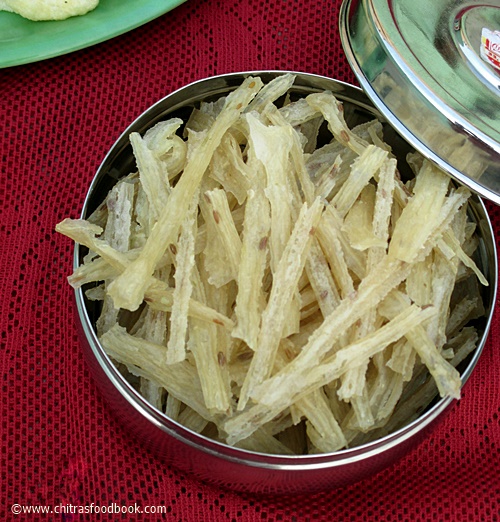
Every year during summer, my MIL makes arisi koozh Vadam/ Koozh Vathal in large quantities and give me for the whole year’s use. So I never thought of making on my own till today. But I have the anticipation and eagerness to try on my own. Last year I successfully tried and shared mor milagai recipe with my MIL’s guidance over phone. For making koozh vadam dough, I wanted to see my MIL’s preparation in person before I attempt on my own. But every year it is not possible as she finishes all these works in the beginning of summer season as it starts to rain during mid summer in Salem.So this year,when she prepared koozh vathal , I told my in-laws to take step by step pictures for this post and for my future reference as well. I am very thankful to my FIL for taking such a detailed stepwise pictures which even I can’t do. They mailed me a video for making sago vadam/Javvarisi vadam and these stepwise pictures for arisi koozh vadam. My mom usually makes vathal with leftover rice and we call it as”killu vadam/vathal”. Today lets see how to prepare arisi koozh vathal/Rice koozh vadam recipe in detail with step by step pictures.
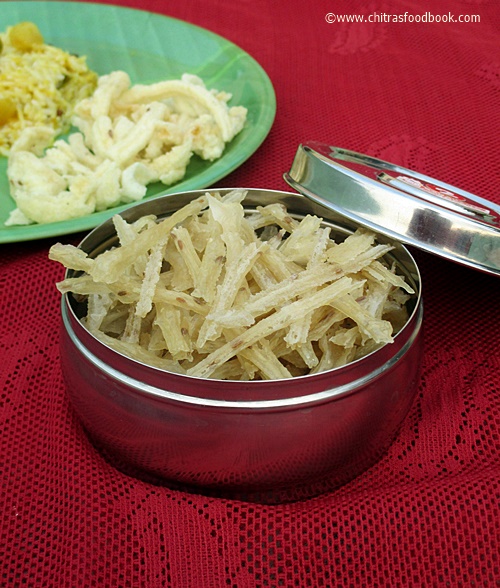
Arisi Koozh Vadam recipe
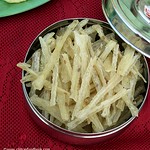 How to make arisi koozh vadam at home
How to make arisi koozh vadam at home
Cuisine: Indian
Category: Snacks
Yields: 3-4 cups
Prep time: 5 Hours
Cook time: 45 Minutes
Total time: 5H45M+3days
1 cup = 250ml
- Rice – Raw rice or steamed/ parboiled rice ( Puzhungal arisi/ saapatu arisi) – 2 cups
- Javvarisi/sago – 3 tbsp
- Lemon – 1/2 no
- Green chillies – 4-6 nos ( based on size)
- Cumin seeds/Jeera – 1/2 tbsp
- Crystal Salt – as needed
- Water – to make dough ( we used 8 cups)
For making vadam
- Murukku press with star mould or Ribbon pakoda mould
- White cloth or polythene sheet
- A heavy bottomed vessel for cooking the koozh dough + a ladle
|
METHOD
- Wash and soak the rice / saapattu puzhungal arisi and javvarisi / sago ( Do not use idli rice) for 4 hours. Grind the rice adding enough water to a very smooth paste. No matter even if the batter becomes watery.
- Grind the green chillies along with the salt required for koozh vathal. Add water and grind it to a paste.
- Heat a pressure cooker base or a big heavy bottomed vessel. Add 2 cups of water to the ground koozh batter and mix it without lumps. Heat 8 cups of water to the cooker and let it boil. Add the chillies paste and cumin seeds while the water boils.
- When the water starts to roll boil, add the koozh batter in one hand while stirring the water in the other hand. Keep the flame high & mix well till all the water is absorbed by the dough. Check for salt and add some powdered salt if needed.

- Now simmer the flame and cover the cooker. Let the dough cook well for 30 minutes. Stir it in regular intervals else the dough will be burnt in the bottom.
- Once the dough is cooked, it will become shiny and non sticky. U should be able to roll by greasing your hands in water. But do not make the dough too hard. It should be slightly goesy and easy to press. Lastly add the lemon juice, mix well and let it rest for few minutes. ( Adding lemon juice gives a mild sour taste to vadam and makes the vadam white in color. But you should add it only at the end else the batter will taste bitter.)
- Now take a murukku press with star mould or ribbon pakoda mould.Ribbon pakoda mould is better to use.Take a ladleful of koozh dough and fill the murukku press when the dough is hot. If you wait for the dough to cool down, a layer may form ie rice aadai and it may block the holes of press making it hard to press. So my Mil always press the dough when it is hot.
- Wash and spread a white cotton cloth or polyester cloth ( helps to remove easily) or plastic sheet. Press the murukku press over the cloth vertically as shown in the picture.
- Allow it to sun dry for a day till the evening and dry it under the fan over night. It will be half dried. The next day morning, sprinkle water on the back side of cloth and remove the half dried vadam. Spread them well and again sun dry it for whole day. Repeat the same process till they are completely dry. It takes maximum 3-5 days based on the weather.
- When they turn completely dry, heat oil and check for its temperature by dropping a pinch of vadam. If it rises to the top immediately, oil temperature is right. Now fry few pieces. If it comes out crispy and big in size, it is perfect. If it tastes chewy, hard and uncooked, it has to be dried for more time. So let it dry for 2 more days.
- Once they are completely dry, store it in a box. Fry it whenever needed.
- It stays good for years when you use clean dry hands to handle. Never touch the vadam with wet hands because small insects will come over time.
Enjoy with your favorite variety rice. We love to have it for tamarind rice, sambar rice and lemon rice.
|
Note
- You can use either raw rice or steamed rice. Raw rice vadam looks white in color. But my MIL says vadam made with steamed rice tastes good.
- You can also add little quantity of sago/javvarisi. It gives crispy and light vathal. But it absorbs little more oil while frying.
- If you want to store the fried vathal, keep it in a polythene cover and close it air tight. It will stay good for a day.
- If the koozh vadam doesn’t spread well while frying, water content in the dough is less OR its not dried properly else oil temperature for frying is less.
|
Try this arisi koozh vathal and enjoy with your favorite variety rice ! I had it with sambar rice


 How to make arisi koozh vadam at home
How to make arisi koozh vadam at home 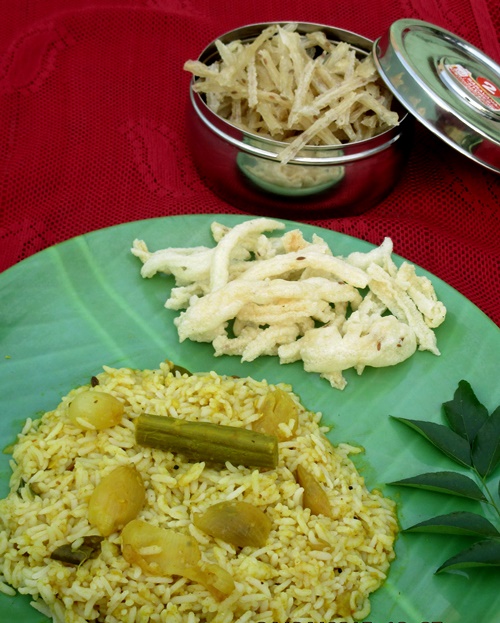

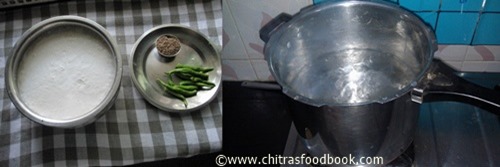
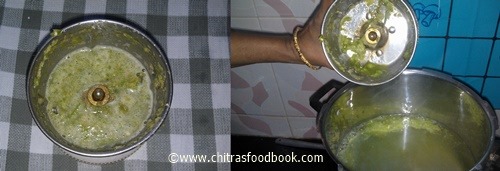

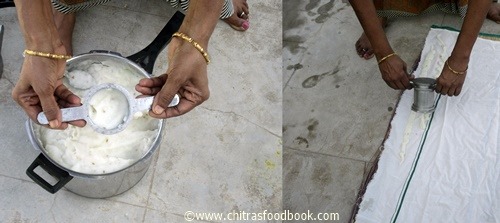
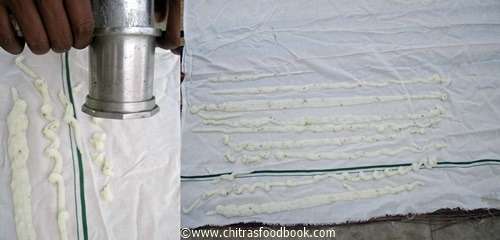
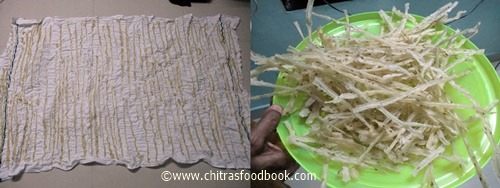
Leave a Reply